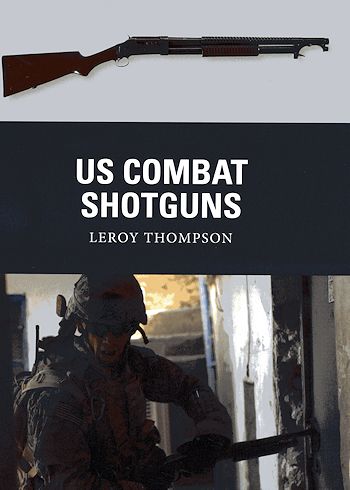 It is
quite often that a weapon designed for one task is used in another. So it is
with the case of the shotgun. Initially designed for hunting small game where
the small pellets would be sufficient to bring down pheasants and other small
animals, the shotgun has turned into a much used and greatly appreciated weapon
of warfare. Appreciated by the side that is using them, that is.
It is
quite often that a weapon designed for one task is used in another. So it is
with the case of the shotgun. Initially designed for hunting small game where
the small pellets would be sufficient to bring down pheasants and other small
animals, the shotgun has turned into a much used and greatly appreciated weapon
of warfare. Appreciated by the side that is using them, that is.
Shotguns have the benefit of being able to work well at
relatively close range. They are quite inaccurate at any long range, but then
again, there are instances where short range weapons are preferable. The US Army
discovered this while working the Moro wars in the Philippines. Here, its
ability to stop rampaging attackers and to work well in dense foliage was a
benefit. They also proved to be excellent in trench warfare during WWI, being
touted as 'trench guns' with the addition of a bayonet. So effective were they,
that the Germans complained that the guns violated the Geneva Convention because
they infrequently killed the recipient of the fire, only wounding them.
Generally these shotguns were not the standard long
barreled weapons many hunters are familiar with, but were shortened or 'sawed
off' for close range use. They are generally used with the large 00 shot rather
than the smaller birdshot. Built by a variety of manufacturers, these guns were
mostly pump action that could hold a number of rounds before reloading. There
are and were versions tested that had a semi-automatic feature with large
detachable drums holding many more shells.
Not only are these guns useful in warfare, but more and
more police departments and prison officials are armed with them. No other
military uses the shotgun to the extent of the United States and they are still
a valued weapon in military service.
Author Thompson does a great job of providing
us with the history of the gun as well as the number of different manufacturers
and types. Of equal interest is the description of its use
during its operational use. The book is well illustrated, showing the variety of
guns and with period photos showing it in use by soldiers. It all makes for a very good read and one that I have no trouble
recommending to you.
September 2013
For more on the complete line of Osprey books,
visit www.ospreypublishing.com
or contact them at Osprey Direct, PO Box 140, Wellingborough, Northants,
NN8 2FA, UK. In the US, it is
Osprey Direct at 44-02 23rd St, Suite 219, Long Island City, NY 11101., where you can
get a catalogue of available books.
If you would like your product reviewed fairly and quickly, please
contact
me or see other details in the Note to
Contributors.
 It is
quite often that a weapon designed for one task is used in another. So it is
with the case of the shotgun. Initially designed for hunting small game where
the small pellets would be sufficient to bring down pheasants and other small
animals, the shotgun has turned into a much used and greatly appreciated weapon
of warfare. Appreciated by the side that is using them, that is.
It is
quite often that a weapon designed for one task is used in another. So it is
with the case of the shotgun. Initially designed for hunting small game where
the small pellets would be sufficient to bring down pheasants and other small
animals, the shotgun has turned into a much used and greatly appreciated weapon
of warfare. Appreciated by the side that is using them, that is.